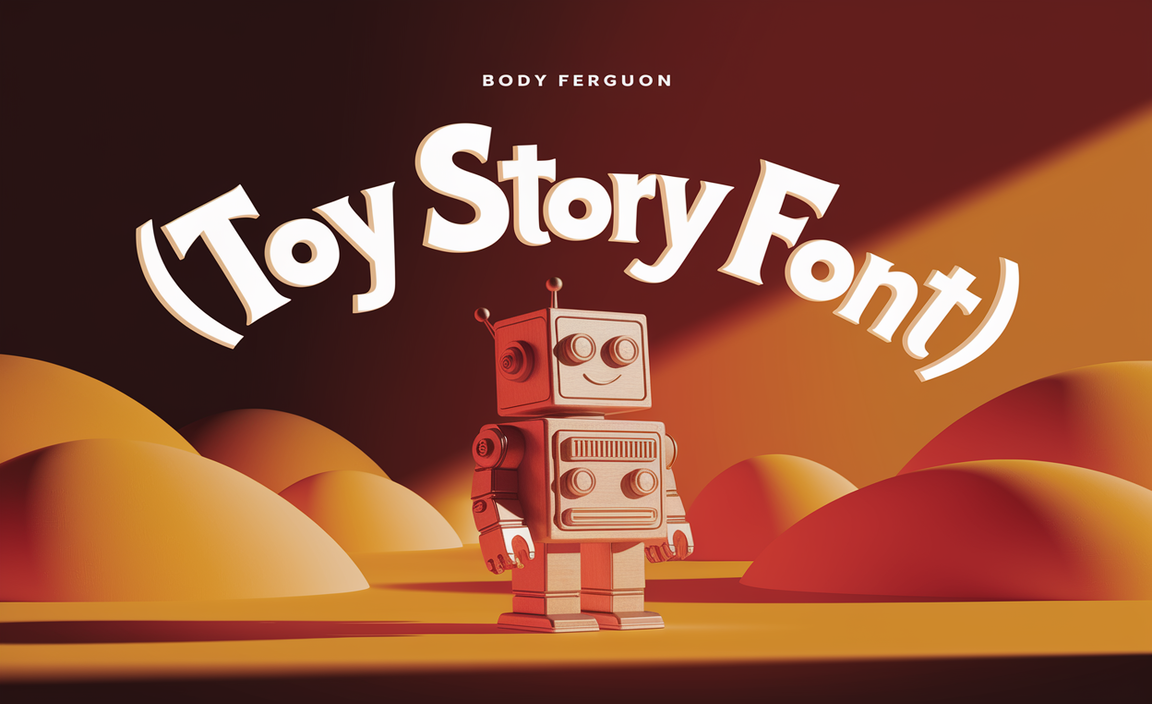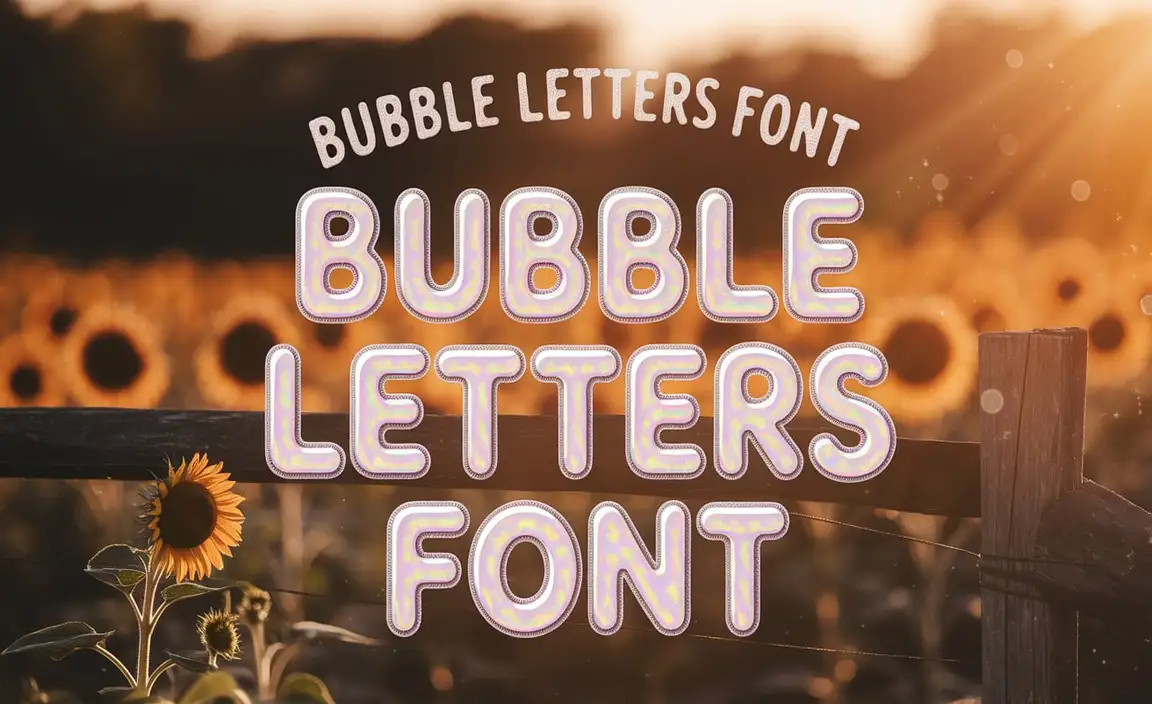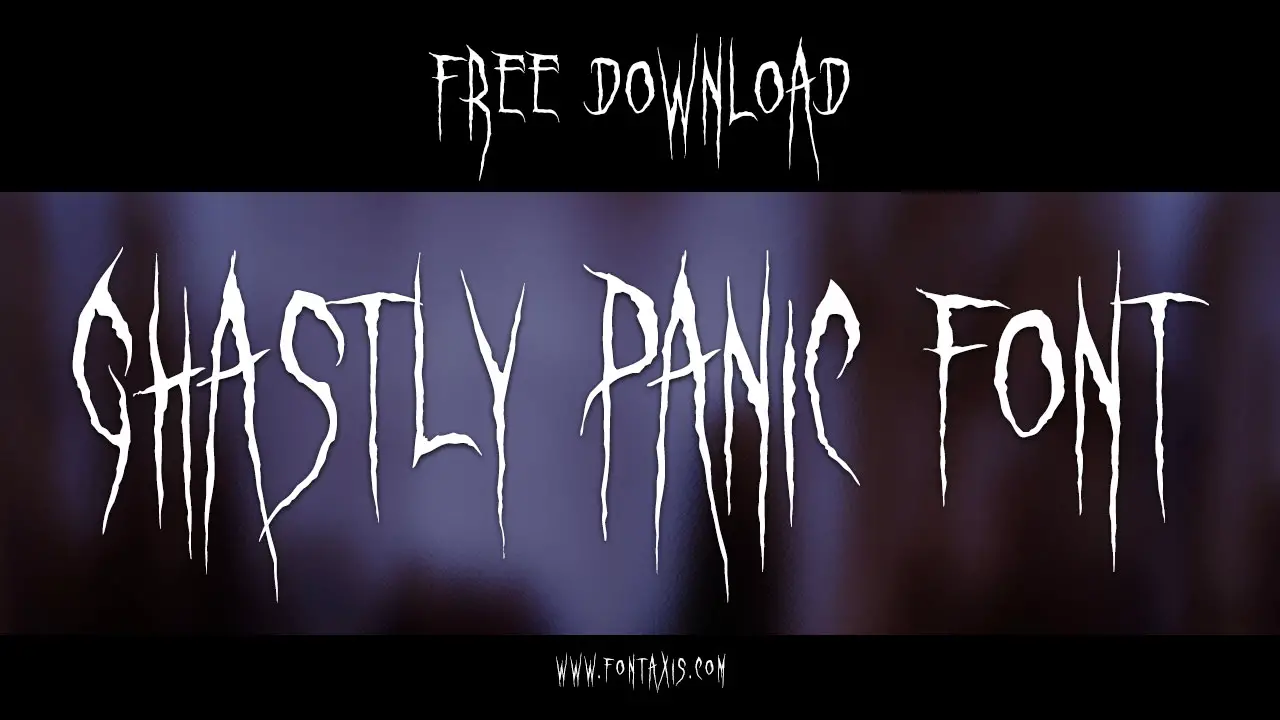Algerian Font: Your Essential Guide
The Algerian Font is a distinctive, bold typeface often recognized for its strong, artistic flair and vintage appeal. It’s perfect for creating impactful headlines, striking logos, and eye-catching display text that needs to stand out. This guide will help you understand its characteristics, best uses, and how to incorporate it effectively into your designs.
Welcome to FontAxis! I’m Linda Bennett, and I’m thrilled to help you navigate the wonderful world of typography. Ever seen a font that just screams personality? That’s often the magic of display fonts, and Algerian is a fantastic example. It has this unique charm that’s hard to ignore, but sometimes figuring out how and where to use it can feel a bit tricky. Don’t worry! We’ll dive into everything you need to know about Algerian Font, from its history to practical design tips. Let’s unlock its creative potential together!
What is Algerian Font? A Closer Look
Algerian Font is a display typeface that first appeared in the early 20th century. Its defining characteristics include:
- Bold and Wide Strokes: The letters are generally thick and have a substantial presence.
- Unique Serifs: It features distinctive, almost bracketed serifs that add to its decorative quality.
- Art Nouveau Influence: While not strictly an Art Nouveau font, it shares a certain flourish and artistic flair common in that era.
- Hand-Drawn Feel: It often mimics the look of hand-lettering, giving it a warm and approachable, yet strong, feel.
- Limited Ligatures or Extended Characters: Typically, it’s a straightforward font with standard character sets.
This font isn’t designed for long blocks of text. Instead, it shines when used for headings, titles, logos, and other short, impactful statements where its visual weight and unique style can be appreciated without sacrificing readability.
A Brief History and Origin
The exact origin story of the Algerian Font is a little shrouded in time, as is common with many typefaces designed before widespread digital archiving. However, it’s widely believed to have been created in the early 1900s. Its style reflects the decorative trends of the late Victorian and early Art Nouveau periods, which celebrated ornate details and organic forms. Emerging in an era of increasing industrialization, typefaces like Algerian offered a touch of artisanal craftsmanship and artistic expression.
It was often used in advertising, posters, and book titles where a strong, memorable impression was desired. Its robustness and distinctive appearance made it a popular choice for generating excitement and drawing attention. Think of early cinema titles or grand theatre posters – Algerian would have been a strong contender for such applications.
Where Does Algerian Font Shine? Best Use Cases
Algerian Font is a specialist, and like any specialist, it excels in specific situations. It’s a font that demands attention, so it’s best reserved for precisely that purpose. Here are some scenarios where it truly shines:
- Headlines and Titles: This is where Algerian truly comes alive. Its boldness makes it perfect for grabbing your reader’s eye on websites, posters, flyers, and magazine covers.
- Logos and Branding: For businesses aiming for a vintage, classic, or artisanal feel, Algerian can be a fantastic choice for a logo. It conveys a sense of established quality and distinctiveness. Consider brands in the food industry, heritage businesses, or creative studios.
- Display Text in Presentations: Use it for slide titles or key takeaways in presentations to add visual emphasis and a touch of elegance.
- Event Invitations and Signage: For themed events, weddings, or parties aiming for a classic or vintage aesthetic, Algerian can set the perfect tone.
- Short Taglines or Slogans: When you need a few words to make a big impact, Algerian can deliver.
- Print Design Elements: Think book covers, album art, or packaging where a strong, decorative element is needed.
It’s important to remember that Algerian is a display font. This means it’s designed to be seen from a distance or used in large sizes. Using it for body text would make it incredibly difficult and tiring to read.
Understanding the Algerian Font Family: Variations and Alternatives
While the core “Algerian” font is quite distinct, you might find slight variations or fonts inspired by its style. Many font foundries have their interpretations, which can differ in stroke width, serif style, or overall character. Always check the specifics of the font file you are using.
Common Variations and Similar Typefaces
When looking for Algerian or similar fonts, you might encounter:
- Algerian Regular: This is the standard and most common version.
- Bold/Heavy Weights: Some digital versions might offer heavier weights, but the original is inherently bold.
- Inspired Designs: Many type designers have created fonts that echo Algerian’s robust, slightly decorative, serifed style. These might be found under different names but aim for a similar vintage or impactful feel.
When Algerian Isn’t Quite Right: Finding Alternatives
Sometimes, Algerian might feel a bit too heavy, too specific, or you might simply want a different flavor of bold. Here are some alternative font categories and specific examples that can achieve a similar impact, depending on your needs:
| Font Category | Characteristics | When to Use | Example Typefaces |
|---|---|---|---|
| Bold Serif Display Fonts | Similar to Algerian in its strong presence and serifs, but may have cleaner lines or a different historical inspiration. | Headlines, logos, book covers needing a strong, classic feel. | Trajan Pro, Cinzel Decorative, Playfair Display Bold |
| Vintage-Inspired Sans Serifs | Bold, impactful sans-serif fonts that evoke a retro feel without serifs. | Logos, headlines, posters wanting a vintage but more streamlined look. | Bebas Neue, Oswald, League Gothic |
| Art Deco Display Fonts | Geometric, often bold fonts with sharp angles and a luxurious feel, reminiscent of the Art Deco period. | Luxury branding, retro event design, titles aiming for sophistication. | Metropolis, Lobster, Bangers |
| Slab Serif Fonts | Fonts with thick, block-like serifs. They offer boldness and readability. | Strong headlines, signage, branding that needs a sturdy, reliable look. | Rockwell, Arvo, Roboto Slab |
Choosing an alternative often depends on whether you want to maintain the serifed character, the vintage feel, or just the sheer visual impact. Exploring these options can broaden your design palette immensely.
How to Use Algerian Font Effectively in Your Designs
Using Algerian font is about leveraging its power without letting it overwhelm your design. It’s a strong personality, so learning to work with it is key.
Step-by-Step Integration into Your Project
- Identify the Purpose: First, decide where Algerian will make the most impact. Is it a main headline? A logo? A key decorative element? For this guide, let’s assume you’re using it for a poster headline.
- Select Your Design Software: Open your preferred design tool (e.g., Adobe Photoshop, Illustrator, Canva, Figma).
- Place Your Text: Type out your headline. For instance, “Grand Opening Gala.”
- Apply Algerian Font: Find “Algerian” in your font list and apply it to the text. You’ll immediately see its bold presence.
- Adjust Size and Leading: Increase the font size significantly. For headlines, you want it to be the focal point. Adjust the leading (the space between lines of text) to ensure it’s comfortable to read. If your headline is multi-line, you might need to increase leading slightly to prevent the thick strokes from feeling too cramped.
- Kerning: Pay attention to kerning (the space between specific pairs of letters). Algerian can sometimes have slightly uneven spacing due to its unique forms. Adjusting kerning manually for key letter pairs (like ‘G’ and ‘a’ in “Gala”) can improve visual harmony.
- Pair Wisely: This is crucial! Algerian needs a supporting cast. For body text or less important information, choose a clean, highly readable font. A simple sans-serif like Open Sans, Lato, or a classic serif like Times New Roman (though less common for digital pairing) will work well. The contrast between the strong display font and a simple text font is what makes the design work.
- Consider Color: Algerian’s boldness means it can be legible in many colors. However, ensure sufficient contrast with the background. White or a light color on a dark background, or a rich color on a neutral background, usually works best.
- Balance the Layout: Because Algerian is visually heavy, balance it with simpler elements in your design. Avoid clutter. Let the headline and its font be a strong statement, and keep other elements clean and understated.
- Test Readability: Even for headlines, quickly check if it’s easy to understand at a glance. If it feels too busy or hard to decipher, consider slightly reducing point size or adjusting letter spacing.
Tips for Pairing Algerian Font
Font pairing can make or break a design. With a font as distinctive as Algerian, thoughtful pairing is essential:
- Contrast is Key: Pair Algerian with a font that offers a clear difference. A simple, geometric sans-serif is often the best choice. This creates a hierarchy and ensures that secondary information doesn’t compete with your bold headline.
- Keep Body Text Simple: For any text that needs to be read extensively (like descriptions, paragraphs, or disclaimers), opt for a highly legible font. Fonts like Roboto, Open Sans, or Lato are excellent choices.
- Avoid Similar Display Fonts: Don’t pair Algerian with another ornate, bold, or highly decorative font. This will lead to a chaotic and unreadable design.
- Consider the Mood: Algerian has a classic, impactful, and slightly vintage feel. Pair it with fonts that complement this mood. For example, a sophisticated serif for secondary headings might work if the overall theme is elegant and timeless.
- Hierarchy Matters: Use Algerian for the most important text elements. If you have a sub-headline, use a slightly less dominant but still strong font, and then your simple body text font.
Technical Considerations: Font Files and Licensing
When you decide to use a font like Algerian, understanding the technicalities is important for seamless implementation and legal compliance.
Font Formats
You’ll typically encounter fonts in a few key formats:
- TrueType Font (TTF): An older but still widely used format. It’s robust and compatible with most operating systems and applications.
- OpenType Font (OTF): A more modern format that expands on TrueType. OTF fonts can contain more advanced typographic features like ligatures, stylistic alternates, and extended character sets. Most modern design software supports OTF.
- Web Open Font Format (WOFF/WOFF2): These are specifically designed for web use. They are compressed for faster loading times on websites. If you plan to use Algerian on a website, you’ll need these formats. You can often convert TTF/OTF to WOFF using online tools like CloudConvert or Font Squirrel’s Webfont Generator.
For example, the Google Fonts library offers a vast collection of free and open-source fonts. While Algerian itself isn’t on Google Fonts, exploring it can give you an idea of font formats and licensing.
Licensing and Usage Rights
It’s crucial to understand the license associated with any font you use, including Algerian. Fonts can be:
- Freeware: These fonts can generally be used for free, both personally and commercially. However, always check the specific license details.
- Shareware/Demo: Sometimes, a font is offered for free for personal use, but requires payment for commercial projects.
- Commercial Fonts: These require purchasing a license. Licenses vary widely – from desktop licenses (for use on a computer for print design) to web licenses (for use on websites) or app licenses.
If you download Algerian from a free font website, ensure you’re checking its license. Reputable sources will clearly state the usage rights. Using a font without the proper license can lead to legal issues. For instance, if you’re designing for a client, you’ll need to ensure your license covers their intended use.
Algerian Font in Action: Design Examples
Seeing is believing! Let’s visualize how Algerian font can be used in different contexts:
Example 1: Movie Poster Headline
Imagine a vintage-style adventure film. The title:
THE LOST TEMPLE OF ZAYN
Here, Algerian’s bolder-than-bold strokes give an immediate sense of grandeur and mystery. It feels epic and demands attention, suited perfectly for a dramatic movie title.
Example 2: Restaurant Logo
Consider a new upscale bistro aiming for a classic, established feel. The restaurant name:
VINTAGE BISTRO
The font here conveys tradition, quality, and a touch of old-world charm. Paired with a simple sans-serif for the slogan “Authentic French Cuisine,” it creates a balanced, appealing brand identity.
Example 3: Event Invitation
For a formal masquerade ball invitation:
Masquerade Ball
This headline instantly sets a festive, somewhat decadent tone. The inherent flourish of Algerian hints at elegance and a special occasion. The rest of the invitation details would be in a classic, readable serif or sans-serif font.
Common Questions About Algerian Font (FAQ)
Q1: Is Algerian Font free to use?
The availability and licensing of Algerian Font depend on where you download it. Many versions found online are shareware or freeware for personal use, but commercial use often requires a paid license. Always check the font’s license agreement before using it for commercial projects.
Q2: Can I use Algerian Font for body text?
No, Algerian Font is a display typeface and is not suitable for body text. Its thick strokes and decorative qualities make it very difficult and tiring to read in small sizes or long paragraphs.
Q3: What’s the best way to pair Algerian Font?
To pair Algerian Font effectively, choose a contrasting, simple, and highly readable font for your body text or secondary information. A clean sans-serif (like Lato or Open Sans) or a simple serif font generally works best to provide a clear hierarchy.
Q4: Where can I find the Algerian Font?
You can find Algerian Font on various font websites. Some popular sources include DaFont, 1001 Fonts, and commercial font foundries. Be sure to check the licensing terms on each site.
Q5: What kind of projects is Algerian Font best suited for?
Algerian Font is ideal for headlines, titles, logos, invitations, posters, and any design element where you need a bold, attention-grabbing, and classic or vintage look. It excels in short bursts of text.
Q6: How can I make Algerian Font look modern?
While Algerian has a vintage feel, you can modernize it by pairing it with contemporary sans-serif fonts, using bold and vibrant color palettes, and incorporating it into clean, minimalist design layouts. The contrast between old and new can be striking.
Conclusion
Algerian Font is a powerful tool in a designer’s arsenal, offering a unique blend of boldness, character, and vintage appeal. While it commands attention, its effective use hinges on understanding its strengths and limitations. By reserving it for headlines, logos, and other display purposes, and by pairing it thoughtfully with clean, readable fonts, you can create designs that are both impactful and elegant.
Remember, typography is about more than just choosing pretty letters; it’s about communication. Algerian Font, used wisely, can amplify your message, evoke a specific mood, and leave a lasting impression. I hope this guide has demystified Algerian Font and empowered you to experiment with it in your next creative project. Happy designing!







